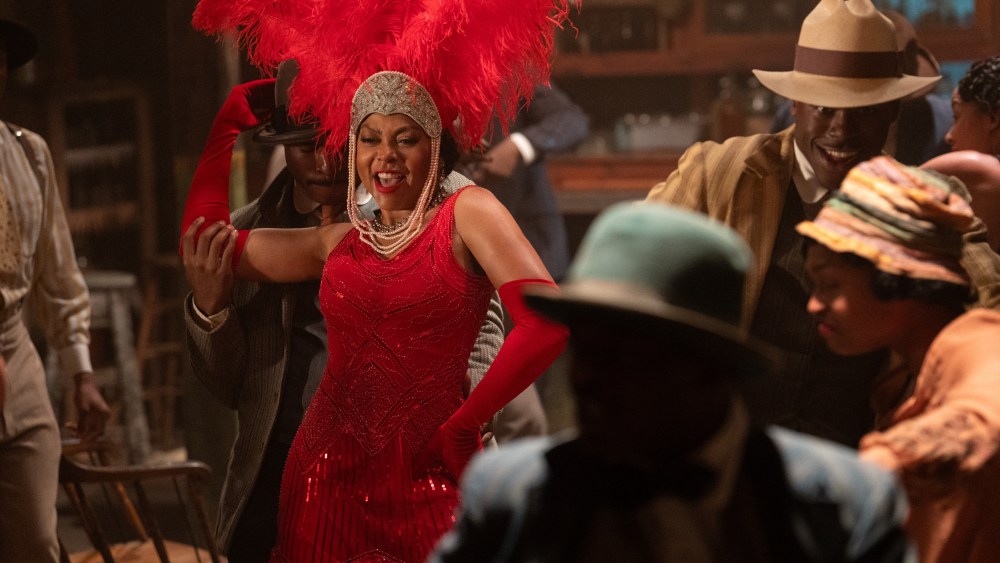Taraji P. Henson on ‘Color Purple’ Shug Making Her ‘Sexy and Regal’
Director Blitz Bazawule had a clear vision of what he wanted Shug Avery (Taraji P. Henson) to represent in “The Color Purple.” She was a bold, sexy, beautiful and extraordinary woman, but she was also loving and nurturing to Celie (Fantasia Barrino) and Sophia (Danielle Brooks). “Those were her sisters and there was a bond there,” Tym Wallace, the film’s makeup and hair department artist explains.
In bringing his version of Alice Walker’s classic novel to the big screen, Bazawule put together a series of storyboard sketches he had laid out — a grand musical production with vivid color, majestic cinematography and show-stopping musical numbers. It wouldn’t just help him pitch the idea to producers Steven Spielberg and Oprah Winfrey that he was the right man to take on this giant task, it would help his artisans in bringing Shug to life and have her embody sexiness and ooze empowerment.
Bazawule began by creating the mythos of Shug.
Colman Domingo’s Mister keeps a signed photo of her by his bedside table. Bazawule points out, “It really begins with lore. I love when she’s whispered about: Who is she? What is she? So, when we finally see her in that photograph, I wanted to make sure she was meeting that myth and legend with this elegance and the fan.”

Bazawule explains as cinematographer Dan Laustsen pushes into that photograph, “It’s the first time we see opulence. The film is rooted in the rural environment before that push. Environmentally, it demonstrates there’s a world on the other side of the film In the hopes that we’ll get there one day, and the only person who can take audiences there is Shug.”
Wallace worked on Henson’s hair journey.
While the rest of the characters had a similar look visually, he wanted audiences to see that Shug was not an average person and there was something special about her. Says Wallace, “When Shug is first introduced, it’s the early 1920s. She had a textured, deep side part finger wave tousled bob. That was her signature look throughout.”
Costume designer Francine Jamison-Tanchuck used gloves and jewelry to show Shug’s empowerment. This woman came from that town and broke away from it. Those accessories strengthened her personality. As with the other artisans, Jamison-Tanchuck knew the juke joint moment needed to be bigger than life. “Nothing says that more than red.” The outfit nodded to Aggie Guerard Rodgers’s 1985 designs from the original film, but Jamison-Tanchuck also looked at what performers were wearing in 1918 and the early 1920s. She added beads rather than fringe to add weight to the dress.

Later when Shug and Celie are walking in the field talking about the color purple, Jamison-Tanchuck says, “I wanted her to have this beautiful Sherbert orange chiffon dress. We wanted to have a style for Taraji that was more fitting into her personality without dismissing the periods.” She adds, “Research showed that performers in that era had skintight outfits, so it wasn’t unheard of. I wanted that for Shug because she was all about being sexy and showing her womanness and strength.”
Adds Henson, “That’s the sexiest I’ve ever felt in any role that I’ve ever played. I felt sexy and regal because that’s who Shug was.”


